
Chart from the News Poverty Map, TMU
June 19, 2024
I have another post today on this week’s release of the annual Reuters Global Digital News Report. This time, it’s on the Canadian report.
My agenda: I am looking for insights on the prospects for a Canadian democracy populated by citizens that are reasonably well informed by reliable news journalism.
Here are some key observations in the Report:
- We are still a nation of news followers.
This is definitely the good news!
The general population (73%) consume news on a daily basis. Another 20% are more casual, non-daily news consumers. An impressive 49% are avid news followers (checking news multiple times per day). Only 7% are dyed-in-the-wool news avoiders. Alas, you can see from the chart below that the numbers are slipping over time.
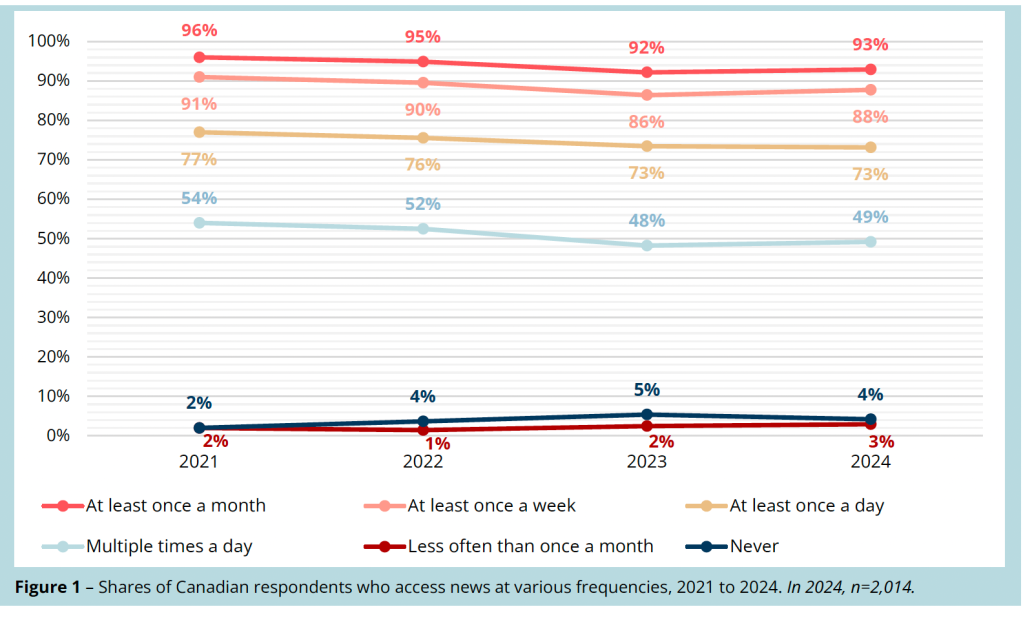
2. Our contentment with news journalism is fraying.
Of course, that could also be a good thing, from a contrarian point of view.
The standard “trust in news” question is whether a respondent believes available news sources are trustworthy, most of the time. The numbers slipped badly in the last 10 years around the world. In the last year, the Canadian number went down only a point (margin of error?). Canadian popular trust in news is close to the global median and considerably higher than obvious comparators, the US and France.
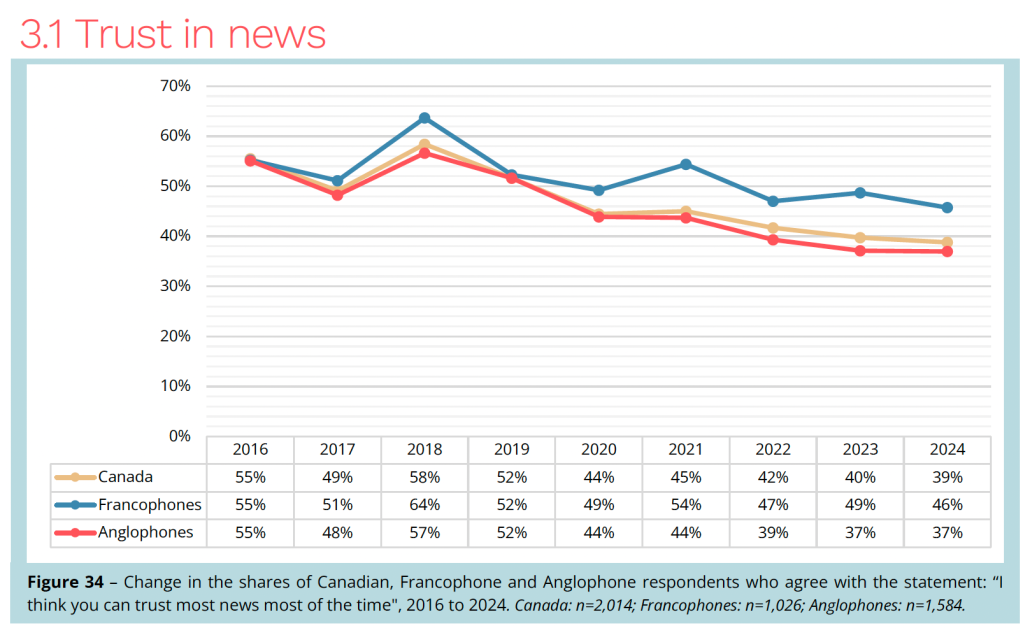
An insight in this Report is that our trust in our own choices of news journalism rides 10 points higher than our trust in the news that others consume. That could reflect fears of disinformation but also intolerance of different points of view in an expanding news universe.
The Report contains apparently contradictory data on rising news interest and rising news avoidance. As context for those numbers, news fatigue (feeling “worn out” by current affairs) is up over the last five years by a considerable margin. Possibly, the avid news followers are becoming more avid, casual news followers (and avoiders) are becoming more avoidant. Again, these are consistent with global trends. In-depth research might clarify.
3. No, I won’t pay for news.
The Canadian drill-down data is even more discouraging than the global numbers of news consumers demonstrating their interest in news by paying for it, meanwhile shoring up the declining monetization of journalism by reliable news organizations.
It’s not just that the Canadian figure for news payers is only 15% of the population. It’s the breakdown of that number.
Fully half of “payors” for online news don’t shell out for a regular news subscription.
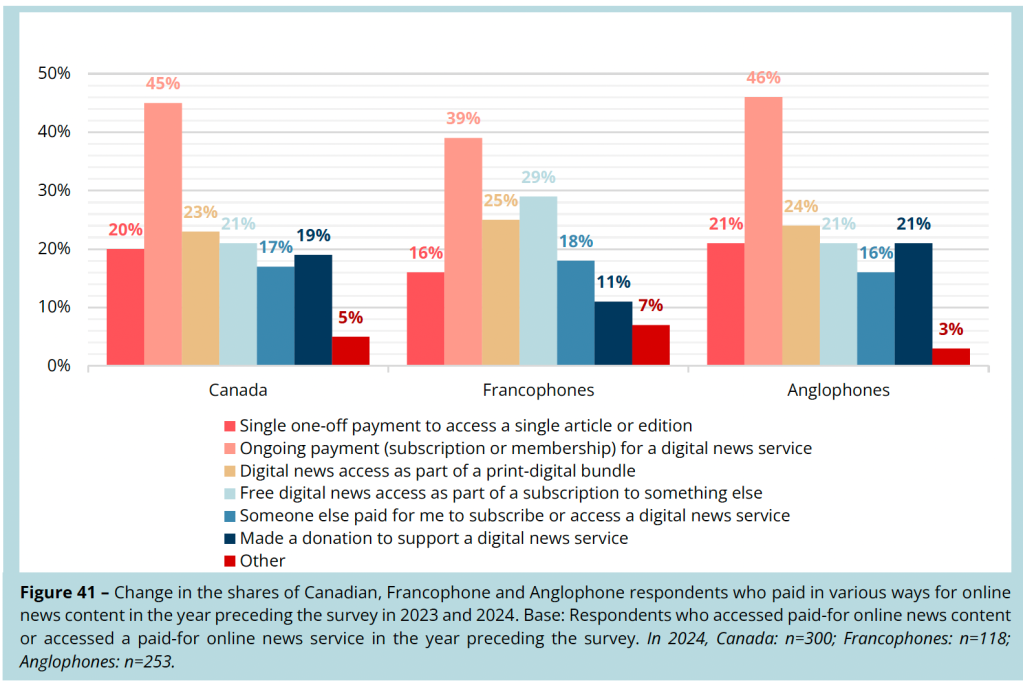
And these numbers above don’t even take into account heavy discounting of regular subscriptions (For example, I pay $50 for a full year of the Toronto Star and another $50 for the Washington Post. I pay the full shot for the Globe and Mail).
To be even more morose, the non-payor expectations of an affordable monthly news subscription is highly price elastic. In other words, we’re cheap:
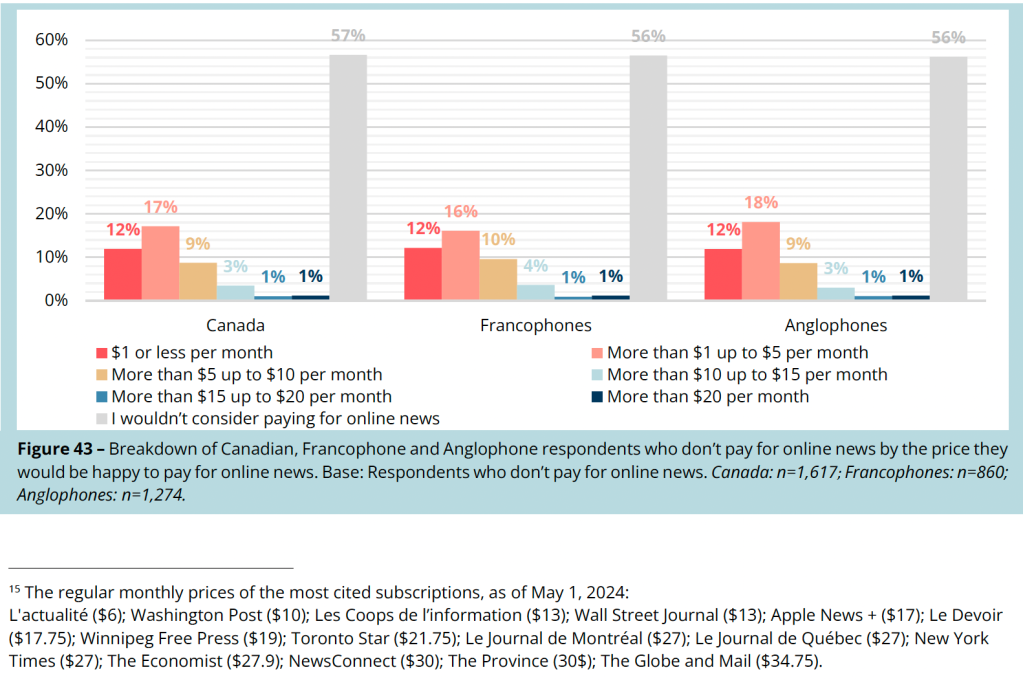
4. Television news, a major host of reliable journalism, is still king and queen.
After viewing all of the short and long term data about the public appetite for news subscriptions, it’s clear that the answer to “what is to be done?” must focus on free, bundled, tax deductible, government subsidized, donor supported, billionaire-patronized, and/or public broadcasting journalism.
The popular bundled product —news provided as part of a multi-interest media source– is still television. There are after all nine million cable TV households among 15 million Canadian homes. You can say that nine million is declining (it is), that it’s reaching a tipping point with online news (it is), and that it’s generational (it is), but the enormous cohort of television-first Canadians has a lot of years left, or so I would like to think.
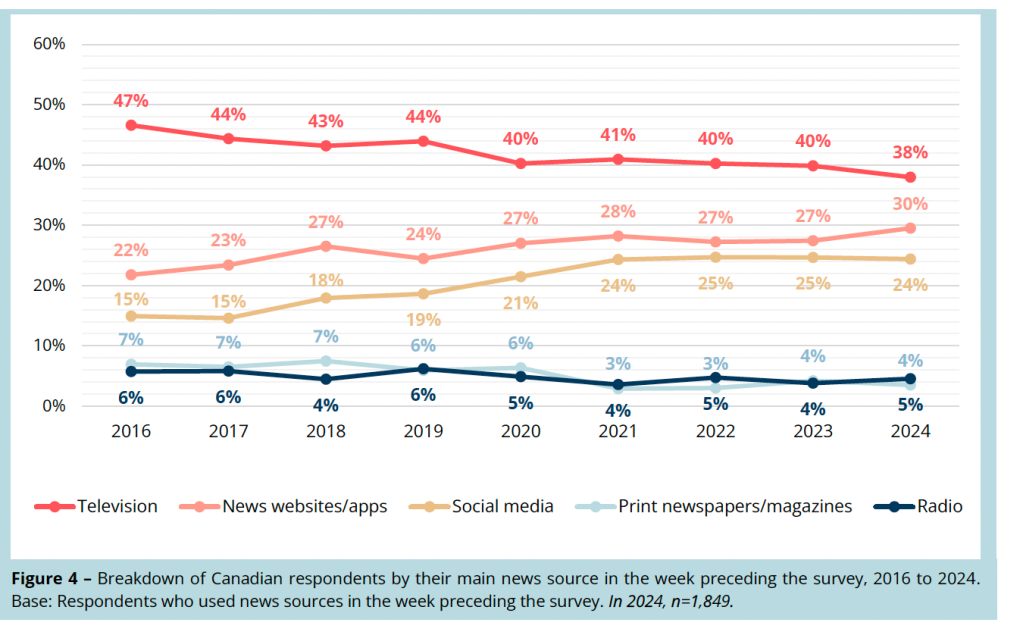
5. Social media gateways to news and the Meta blackout
For this post, let’s take a pass on the argument over the Online News Act and the backfire effect of the Meta news blackout. My own views are here.
The decline of Facebook as a news source, or as a gateway to journalism websites, is a global and long-term trend. That’s by deliberate design and consumer behaviour (especially youth), as we know.
YouTube is taking up the slack, as the Report notes. Instagram is up too. The Facebook numbers in Canada went down dramatically (surely accelerated by the blackout) but as the Report notes: “It is important to note that [consumer] workarounds exist (such as modified hyperlinks and screenshots) and that some accounts of individual journalists or accounts with specialized content (sports channel publications, cultural magazines, etc.) are still accessible on Instagram or Facebook.”
As for the impact on news organizations relying upon Facebook as a distributor, it wasn’t the task of this Report to quantify the impact of the blackout. There are many plausible claims made about closures, decline of start-ups, or loss of traffic. But there is no systematic survey (and sadly given the confidentiality of the figures, probably never will be).
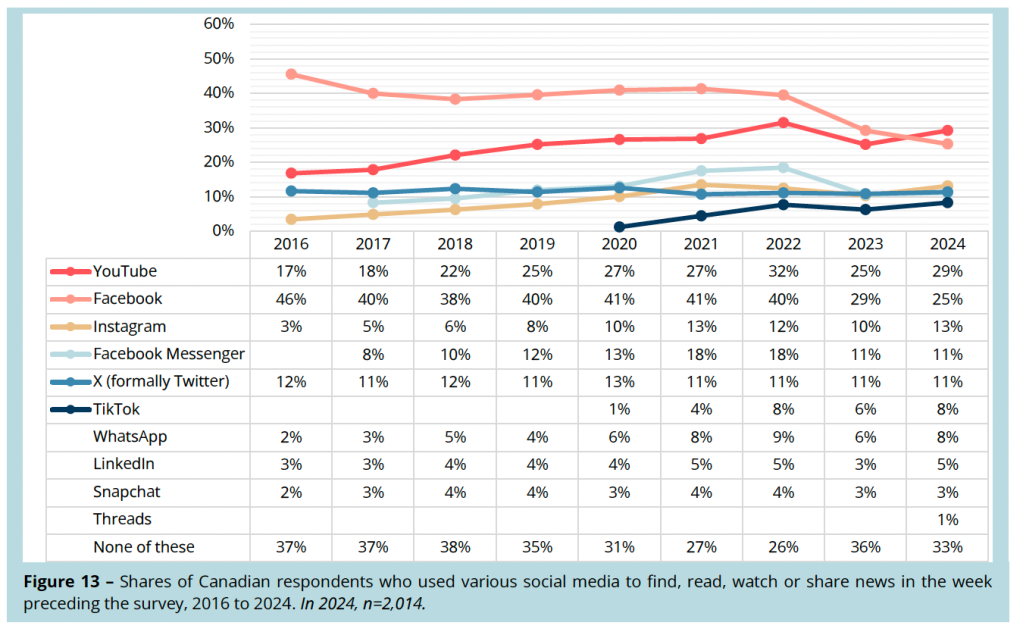
Here’s the full report:
***
If you would like regular notifications of future posts from MediaPolicy.ca you can follow this site by signing up under the Follow button in the bottom right corner of the home page;
or e-mail howard.law@bell.net to be added to the weekly update;
or follow @howardalaw on X.
Hey Howard Can you please add my other e-mail instead of this one? Thank you john@partner.reset.tech
LikeLike
done!
LikeLike